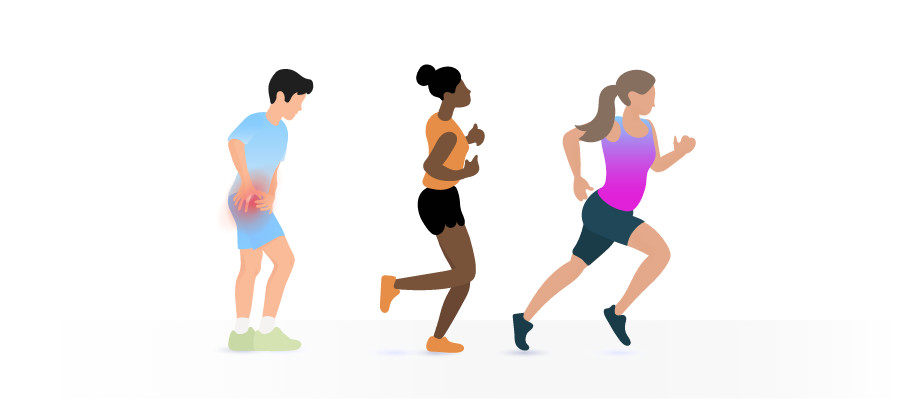Gluteal tendinopathy, also known as trochanteric tendinopathy, is a condition characterized by pain and dysfunction in the outer hip region. It involves pain associated with possible damage to the tendons that attach the gluteal muscles to the greater trochanter of the femur. Gluteal tendinopathy commonly occurs due to repetitive activities, such as running, jumping, or prolonged sitting, and it can significantly impact daily activities and mobility.
Physiotherapy plays a crucial role in the management and rehabilitation of gluteal tendinopathy, aiming to reduce pain, improve function, and restore optimal hip mechanics.
Applying the 5 stages of rehab can help individuals with gluteal tendinopathy achieve positive outcomes and regain pain-free hip function.
Pain and symptom management: The initial stage of rehab focuses on reducing pain and symptoms. Physiotherapists may employ various techniques such as ice or heat therapy, soft tissue mobilization, or muscle activation exercises to alleviate pain and inflammation in the affected area. They may also advise on activity modification and provide guidance on ergonomics and proper posture to minimize stress on the gluteal tendons. For persistent gluteal tendinopathies shockwave therapy can help to reduce pain and promote healing.
Range of motion: Once pain is managed, the next stage involves restoring and improving the range of motion in the hip joint. Physiotherapy exercises may include gentle stretching techniques to increase flexibility and mobility in the hip muscles and tendons. Targeted stretches for the gluteal muscles and iliotibial band can help alleviate tension and improve overall hip range of motion.
Motor control: Stage 3 of rehab focuses on enhancing neuromuscular control and stability around the hip joint. Physiotherapists design exercises that target the gluteal muscles, hip abductors, and core muscles. These exercises aim to improve strength, control, and coordination of the hip musculature to support optimal hip mechanics and reduce strain on the gluteal tendons. Exercises targeting balance and retraining joint proprioception may also be incorporated to enhance motor control and improve functional movements.
Strengthening: In stage 4, the emphasis is on strengthening the hip muscles to provide support and reduce the load on the gluteal tendons. Physiotherapy exercises may include progressive resistance training for the gluteal muscles, hip abductors, and hip external rotators. Strengthening exercises can be performed using resistance bands, weights, or bodyweight, focusing on gradually increasing the load to improve muscle strength and endurance. Strengthening the hip muscles helps offload the tendons and promotes better hip stability.
Maintenance: The final stage of rehab focuses on maintaining the gains achieved in the previous stages and preventing the recurrence of symptoms. Individuals are encouraged to continue with a tailored exercise program that includes a combination of range of motion exercises, strengthening exercises, and functional movements. Physiotherapists provide guidance on proper movement patterns, posture, and activity modifications to prevent overloading the gluteal tendons and to maintain hip health.
In addition to managing the pain and dysfunction associated with gluteal tendinopathy, Range physiotherapists seek to understand and address the underlying cause of the condition, ensuring this is incorporated in your management plan.
For more information regarding gluteal tendinopathy please visit:
https://www.physio-pedia.com/Gluteal_Tendinopathy


